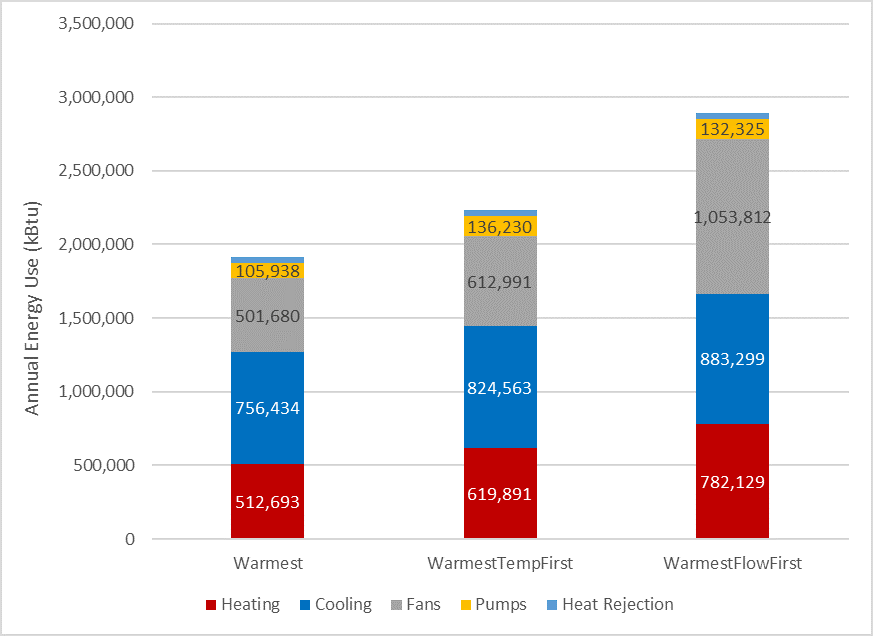I'm trying to understand the vast differences I get in energy usage between different SetpointManager options. From what I can tell from the I/O and Engineering References:
SetpointManager:Warmestresets the cooling SAT based on the cooling demand of the warmest zone, at the maximum zone supply air flow rate.
SetpointManager:WarmestTemperatureFlow "Temp First" resets the cooling SAT based on the cooling demand of the warmest zone, at the zone minimum supply air flow rate. If this SAT is less than the minimum, the SAT is set to the minimum, and the flow rate is increased until the cooling loads are met.
SetpointManager:WarmestTemperatureFlow "Flow First" resets the supply air flow rate based on the cooling demand of the warmest zone, at the zone maximum supply air temperature. If the flow is greater than the maximum, the flow is set to the maximum and the SAT is reduced until the cooling loads are met.
Questions:
- Why do these options yield such different results? I tested all three and came up with this plot of HVAC energy usage:

- In what scenarios would it make sense to implement the
SetpointManager:WarmestTemperatureFlowFlow First or Temperature First options?





